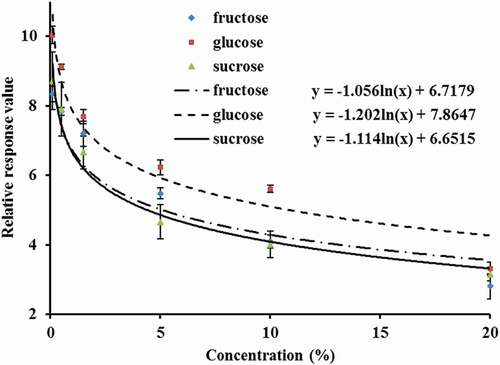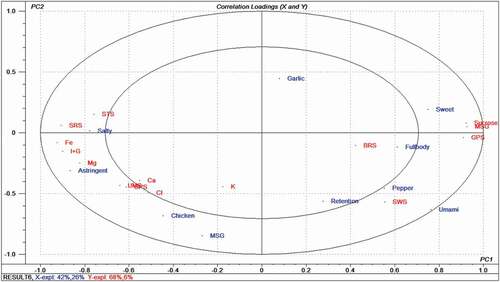Figures & data
Table 1. Compositions of brown sugar, white sugar and liquid sugar added to the chicken seasoning, which were analyzed by Nestlé R&D Center using HPLC (g·kg−1).
Table 2. MSG, I + G, chloride and metal ion contents in the chicken seasoning samples with white sugar (AW), brown sugar (AB) and liquid sugar (AL).
Table 3. ANOVA (Average± Standard Deviation) results of the chicken seasoning samples supplemented with white sugar (AW), brown sugar (AB) and liquid sugar (AL) for ten sensory attributes.
Figure 1. Relationship of the relative response value of the electronic tongue and the fructose, glucose, and sucrose concentrations.

Figure 2. Electronic tongue radar map of the chicken seasoning samples with white sugar (AW), brown sugar (AB), and liquid sugar (AL).



